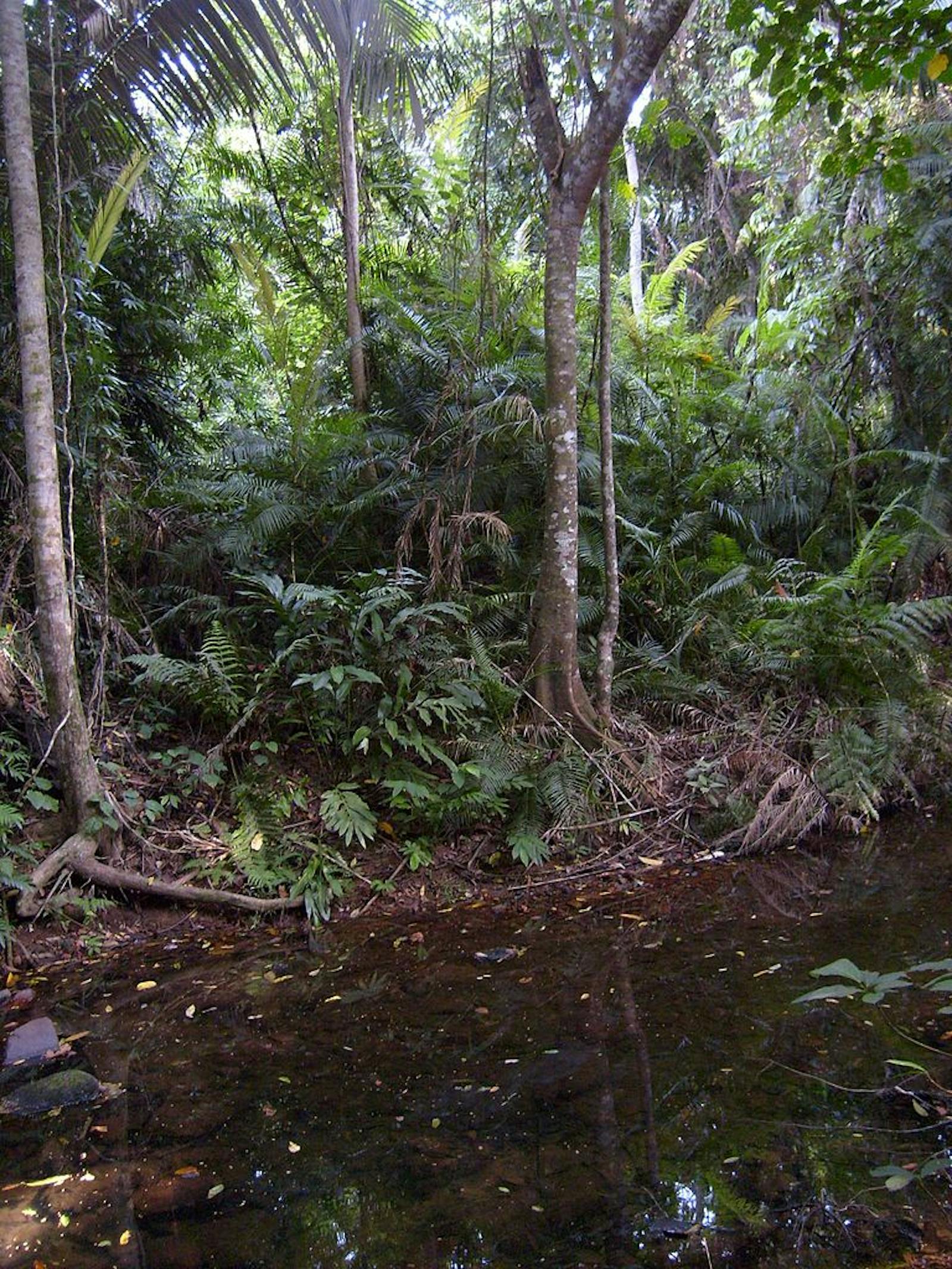Peninsular Malaysian Rainforests
The ecoregion’s land area is provided in units of 1,000 hectares. The conservation target is the Global Safety Net (GSN1) area for the given ecoregion. The protection level indicates the percentage of the GSN goal that is currently protected on a scale of 0-10. N/A means data is not available at this time.
Bioregion: Peninsular Malaysian & Sumatran Tropical Rainforests (IM18)
Realm: Indomalaya
Ecoregion Size (1000 ha):
12,578
Ecoregion ID:
265
Conservation Target:
54%
Protection Level:
3
States: Malaysia, Thailand
In the early 1980s, around 50 to 75 Sumatran rhinoceros, one of Asia’s most endangered large mammals, were estimated to live in Peninsula Malaysia. Three protected areas: Endau-Rompin, Taman Negara, and Sungai Dusun were considered to be the last bastions for this rare rainforest species. But in 2010, the Sumatran rhinoceros was declared extinct from Peninsular Malaysia, victim to relentless poaching for its horn, highly valued in the traditional Chinese medicinal trade.
The Sumatran rhinoceros is not the only highly valued charismatic megavertebrate under threat in this ecoregion. The tiger and Asian elephant are probably the most charismatic and well-known denizens of these rainforests, providing one of the best opportunities to conserve these global icons in Southeast Asia. Both are also under severe threat from poaching and habitat loss.
This ecoregion represents the lowland moist forests of peninsular Malaysia, with small sections extending into southern Thailand. Two monsoons, the northeastern monsoon from October to March and the April to August southwest monsoon bring about 2000 mm of annual rainfall. Temperatures range from 25 to 32ºC.
%20dreamstime_xxl_87269269-2.jpeg)
The flagship species of the Peninsular Malaysian Rainforests ecoregion is the Malayan tapir.
The forests are dominated by species of the family Dipterocarpaceae, represented by species of Anisoptera, Dipterocarpus, Dryobalanops, Hopea, and Shorea. Other large trees include species of Gluta, Heritiera, Palaquium, Sindora, Intsia palembanica, Dyera costulata, and Koompassia malaccensis. In alluvial forests, the gigantic Koompassia excelsa trees tower above the 30 m high forest canopy. The understory trees are saplings of the upper story trees, but also includes shrubs and climbers of Annonaceae, Euphorbiaceae, Flacourtiaceae, Melastomataceae and Rubiaceae. Palms include Arenga westerhoutii, A. obtusifolia, and Eugeissona tristis. Thorny rattans, Calamus and Daemonorops, add structural complexity. The lower hills are also dominated by Dipterocarp species, especially Shorea curtisii, Agathis borneensis, S. platyclados, S. ciliata, S. ovata, S. submontana, Dipterocarpus costatus, D. retusus, and species of Calophyllum and Gluta, in association with the understory palm Eugeissona tristis.
Peninsular Malaysia shares biodiversity with Sumatra and Borneo since all of them were part of a single large landmass during the last ice age, when the sea level was more than 100 m lower than present day level. The connection to the Asian mainland has increased species richness and diversity. In addition to tigers and elephants, mammals of conservation importance include the Malayan tapir—the largest of the four tapir species and the only Old World representative —gaur or seladang as it is known in Malaysia, sun bear, and clouded leopard, just to name a few.
More than 450 species of birds are known from this ecoregion, including several pheasants, such as the crested fireback, Malay peacock pheasant, great argus pheasant, and crested argus pheasant; and hornbills, notably the black hornbill, wreathed hornbill, white‐crowned hornbill, Southern pied hornbill, and rhinoceros hornbill.
.jpg)
Rhinoceros hornbill
The forests are very highly threatened by extensive logging, oil palm, and rubber concessions. Malaysia is on a track of rapid economic development, and the related infrastructure is fragmenting forests. Although satellite imagery indicates the presence of large forest areas, much of these are misclassified plantations.
Thus, the recommended priority conservation interventions are to: 1) revoke concessions in areas of high biodiversity and integrate the forests into a landscape-scale conservation strategy; 2) address wildlife poaching, especially in reserves; and 3) establish a trust fund to offset opportunity costs of maintaining forest cover and to avoid conversion to oil palm plantations.
Citations
1. National Policy on Biological Diversity. 2016-2025. Biodiversity and Forestry Management Division. Ministry of Natural Resources and Environment, Malaysia
2. Wikramanayake, E, E. Dinerstein, et al. 2002. Terrestrial Ecoregions of the Indo-Pacific: A Conservation Assessment. Island Press.
3. Saw LG. 2010. Vegetation of Peninsular Malaysia. In: Flora of Peninsular Malaysia. Series II: Seed Plants, Vol. 1, Edition: Malayan Forest Records No. 49, Publisher: Forest Research Institute Malaysia, Editors: Kiew R., Chung R.C.K., Saw L.G., Soepadmo E., Boyce P.C., pp.21-300.



